Inferno Read online
Page 7
“Was the reason God punished the world with the Black Death,” Sienna said, completing his thought.
“Yes.” Langdon paused, momentarily losing his train of thought. He had just noticed something about the cylinder that struck him as odd. Normally, a person could peer through a cylinder seal’s hollow center, as if through a section of empty pipe, but in this case, the shaft was blocked. There’s something inserted inside this bone. The end caught the light and shimmered.
“There’s something inside,” Langdon said. “And it looks like it’s made of glass.” He flipped the cylinder upside down to check the other end, and as he did so, a tiny object rattled inside, tumbling from one end of the bone to the other, like a ball bearing in a tube.
Langdon froze, and he heard Sienna let out a soft gasp beside him.
What the hell was that?!
“Did you hear that sound?” Sienna whispered.
Langdon nodded and carefully peered into the end of the canister. “The opening appears to be blocked by … something made of metal.” The cap of a test tube, maybe?
Sienna backed away. “Does it look … broken?”
“I don’t think so.” He carefully tipped the bone again to reexamine the glass end, and the rattling sound recurred. An instant later, the glass in the cylinder did something wholly unexpected.
It began to glow.
Sienna’s eyes opened wide. “Robert, stop! Don’t move!”
CHAPTER 14
Langdon stood absolutely still, his hand in midair, holding the bone cylinder steady. Without a doubt, the glass at the end of the tube was emitting light … glowing as if the contents had suddenly awoken.
Quickly, the light inside faded back to black.
Sienna moved closer, breathing quickly. She tilted her head and studied the visible section of glass inside the bone.
“Tip it again,” she whispered. “Very slowly.”
Langdon gently turned the bone upside down. Again, a small object rattled the length of the bone and stopped.
“Once more,” she said. “Gently.”
Langdon repeated the process, and again the tube rattled. This time, the interior glass shimmered faintly, glowing again for an instant before it faded away.
“It’s got to be a test tube,” Sienna declared, “with an agitator ball.”
Langdon was familiar with the agitator balls used in spray-paint cans—submerged pellets that helped stir the paint when the can was shaken.
“It probably contains some kind of phosphorescent chemical compound,” Sienna said, “or a bioluminescent organism that glows when it’s stimulated.”
Langdon was having other ideas. While he had seen chemical glow sticks and even bioluminescent plankton that glowed when a boat churned up its habitat, he was nearly certain the cylinder in his hand contained neither of these things. He gently tipped the tube several more times, until it glowed, and then held the luminescent end over his palm. As expected, a faint reddish light appeared, projected onto his skin.
Nice to know a 208 IQ can be wrong sometimes.
“Watch this,” Langdon said, and began shaking the tube violently. The object inside rattled back and forth, faster and faster.
Sienna jumped back. “What are you doing!?”
Still shaking the tube, Langdon walked over to the light switch and flipped it off, plunging the kitchen into relative darkness. “It’s not a test tube inside,” he said, still shaking as hard as he could. “It’s a Faraday pointer.”
Langdon had once been given a similar device by one of his students—a laser pointer for lecturers who disliked wasting endless AAA batteries and didn’t mind the effort of shaking their pointer for a few seconds in order to transform their own kinetic energy into electricity on demand. When the device was agitated, a metal ball inside sailed back and forth across a series of paddles and powered a tiny generator. Apparently someone had decided to slide this particular pointer into a hollow, carved bone—an ancient skin to sheathe a modern electronic toy.
The tip of the pointer in his hand was now glowing intensely, and Langdon gave Sienna an uneasy grin. “Showtime.”
He aimed the bone-sheathed pointer at a bare space on the kitchen wall. When the wall lit up, Sienna drew a startled breath. It was Langdon, however, who physically recoiled in surprise.
The light that appeared on the wall was not a little red laser dot. It was a vivid, high-definition photograph that emanated from the tube as if from an old-fashioned slide projector.
My God! Langdon’s hand trembled slightly as he absorbed the macabre scene projected on the wall before him. No wonder I’ve been seeing images of death.
At his side, Sienna covered her mouth and took a tentative step forward, clearly entranced by what she was seeing.
The scene projected out of the carved bone was a grim oil painting of human suffering—thousands of souls undergoing wretched tortures in various levels of hell. The underworld was portrayed as a cutaway cross section of the earth into which plunged a cavernous funnel-shaped pit of unfathomable depth. This pit of hell was divided into descending terraces of increasing misery, each level populated by tormented sinners of every kind.
Langdon recognized the image at once.
The masterpiece before him—La Mappa dell’Inferno—had been painted by one of the true giants of the Italian Renaissance, Sandro Botticelli. An elaborate blueprint of the underworld, The Map of Hell was one of the most frightening visions of the afterlife ever created. Dark, grim, and terrifying, the painting stopped people in their tracks even today. Unlike his vibrant and colorful Primavera or Birth of Venus, Botticelli had crafted his Map of Hell with a depressing palate of reds, sepias, and browns.
Langdon’s crashing headache had suddenly returned, and yet for the first time since waking up in a strange hospital, he felt a piece of the puzzle tumble into place. His grim hallucinations obviously had been stirred by seeing this famous painting.
I must have been studying Botticelli’s Map of Hell, he thought, although he had no recollection of why.
While the image itself was disturbing, it was the painting’s provenance that was now causing Langdon an increasing disquiet. Langdon was well aware that the inspiration for this foreboding masterpiece had originated not in the mind of Botticelli himself … but rather in the mind of someone who had lived two hundred years before him.
One great work of art inspired by another.
Botticelli’s Map of Hell was in fact a tribute to a fourteenth-century work of literature that had become one of history’s most celebrated writings … a notoriously macabre vision of hell that resonated to this day.
Dante’s Inferno.
Across the street, Vayentha quietly climbed a service staircase and concealed herself on the rooftop terrace of the sleepy little Pensione la Fiorentina. Langdon had provided a nonexistent room number and a fake meeting place to his consulate contact—a “mirrored meet,” as it was called in her business—a common tradecraft technique that would enable him to assess the situation before revealing his own location. Invariably, the fake or “mirrored” location was selected because it lay in perfect view of his actual location.
Vayentha found a concealed vantage point on the rooftop from which she had a bird’s-eye view of the entire area. Slowly, she let her eyes climb the apartment building across the street.
Your move, Mr. Langdon.
At that moment, on board The Mendacium, the provost stepped out onto the mahogany deck and inhaled deeply, savoring the salty air of the Adriatic. This vessel had been his home for years, and yet now, the series of events transpiring in Florence threatened to destroy everything he had built.
His field agent Vayentha had put everything at risk, and while she would face an inquiry when this mission was over, right now the provost still needed her.
She damned well better regain control of this mess.
Brisk footsteps approached behind him, and the provost turned to see one of his female analysts arriving at a jo
g.
“Sir?” the analyst said, breathless. “We have new information.” Her voice cut the morning air with a rare intensity. “It appears Robert Langdon just accessed his Harvard e-mail account from an unmasked IP address.” She paused, locking eyes with the provost. “Langdon’s precise location is now traceable.”
The provost was stunned that anyone could be so foolish. This changes everything. He steepled his hands and stared out at the coastline, considering the implications. “Do we know the status of the SRS team?”
“Yes, sir. Less than two miles away from Langdon’s position.”
The provost needed only a moment to make the decision.
CHAPTER 15
“L’inferno di Dante,” Sienna whispered, her expression rapt as she inched closer to the stark image of the underworld now projected on her kitchen wall.
Dante’s vision of hell, Langdon thought, rendered here in living color.
Exalted as one of the preeminent works of world literature, the Inferno was the first of three books that made up Dante Alighieri’s Divine Comedy—a 14,233-line epic poem describing Dante’s brutal descent into the underworld, journey through purgatory, and eventual arrival in paradise. Of the Comedy’s three sections—Inferno, Purgatorio, and Paradiso—Inferno was by far the most widely read and memorable.
Composed by Dante Alighieri in the early 1300s, Inferno had quite literally redefined medieval perceptions of damnation. Never before had the concept of hell captivated the masses in such an entertaining way. Overnight, Dante’s work solidified the abstract concept of hell into a clear and terrifying vision—visceral, palpable, and unforgettable. Not surprisingly, following the poem’s release, the Catholic Church enjoyed an enormous uptick in attendance from terrified sinners looking to avoid Dante’s updated version of the underworld.
Depicted here by Botticelli, Dante’s horrific vision of hell was constructed as a subterranean funnel of suffering—a wretched underground landscape of fire, brimstone, sewage, monsters, and Satan himself waiting at its core. The pit was constructed in nine distinct levels, the Nine Rings of Hell, into which sinners were cast in accordance with the depth of their sin. Near the top, the lustful or “carnal malefactors” were blown about by an eternal windstorm, a symbol of their inability to control their desire. Beneath them the gluttons were forced to lie facedown in a vile slush of sewage, their mouths filled with the product of their excess. Deeper still, the heretics were trapped in flaming coffins, damned to eternal fire. And so it went … getting worse and worse the deeper one descended.
In the seven centuries since its publication, Dante’s enduring vision of hell had inspired tributes, translations, and variations by some of history’s greatest creative minds. Longfellow, Chaucer, Marx, Milton, Balzac, Borges, and even several popes had all written pieces based on Dante’s Inferno. Monteverdi, Liszt, Wagner, Tchaikovsky, and Puccini composed pieces based on Dante’s work, as had one of Langdon’s favorite living recording artists—Loreena McKennitt. Even the modern world of video games and iPad apps had no shortage of Dante-related offerings.
Langdon, eager to share with his students the vibrant symbolic richness of Dante’s vision, sometimes taught a course on the recurring imagery found in both Dante and the works he had inspired over the centuries.
“Robert,” Sienna said, shifting closer to the image on the wall. “Look at that!” She pointed to an area near the bottom of the funnel-shaped hell.
The area she was pointing to was known as the Malebolge—meaning “evil ditches.” It was the eighth and penultimate ring of hell and was divided into ten separate ditches, each for a specific type of fraud.
Sienna pointed more excitedly now. “Look! Didn’t you say, in your vision, you saw this?!”
Langdon squinted at where Sienna was pointing, but he saw nothing. The tiny projector was losing power, and the image had begun to fade. He quickly shook the device again until it was glowing brightly. Then he carefully set it farther back from the wall, on the edge of the counter across the small kitchen, letting it cast an even larger image from there. Langdon approached Sienna, stepping to the side to study the glowing map.
Again Sienna pointed down toward the eighth ring of hell. “Look. Didn’t you say your hallucinations included a pair of legs sticking out of the earth upside down with the letter R?” She touched a precise spot on the wall. “There they are!”
As Langdon had seen many times in this painting, the tenth ditch of the Malebolge was packed with sinners half buried upside down, their legs sticking out of the earth. But strangely, in this version, one pair of legs bore the letter R, written in mud, exactly as Langdon had seen in his vision.
My God! Langdon peered more intently at the tiny detail. “That letter R … that is definitely not in Botticelli’s original!”
“There’s another letter,” Sienna said, pointing.
Langdon followed her outstretched finger to another of the ten ditches in the Malebolge, where the letter E was scrawled on a false prophet whose head had been put on backward.
What in the world? This painting has been modified.
Other letters now appeared to him, scrawled on sinners throughout all ten ditches of the Malebolge. He saw a C on a seducer being whipped by demons … another R on a thief perpetually bitten by snakes … an A on a corrupt politician submerged in a boiling lake of tar.
“These letters,” Langdon said with certainty, “are definitely not part of Botticelli’s original. This image has been digitally edited.”
He returned his gaze to the uppermost ditch of the Malebolge and began reading the letters downward, through each of the ten ditches, from top to bottom.
C … A … T … R … O … V … A … C … E … R
“Catrovacer?” Langdon said. “Is this Italian?”
Sienna shook her head. “Not Latin either. I don’t recognize it.”
“A … signature, maybe?”
“Catrovacer?” She looked doubtful. “Doesn’t sound like a name to me. But look over there.” She pointed to one of the many characters in the third ditch of the Malebolge.
When Langdon’s eyes found the figure, he instantly felt a chill. Among the crowd of sinners in the third ditch was an iconic image from the Middle Ages—a cloaked man in a mask with a long, birdlike beak and dead eyes.
The plague mask.
“Is there a plague doctor in Botticelli’s original?” Sienna asked.
“Absolutely not. That figure has been added.”
“And did Botticelli sign his original?”
Langdon couldn’t recall, but as his eyes moved to the lower right-hand corner where a signature normally would be, he realized why she had asked. There was no signature, and yet barely visible along La Mappa’s dark brown border was a line of text in tiny block letters: la verità è visibile solo attraverso gli occhi della morte.
Langdon knew enough Italian to understand the gist. “ ‘The truth can be glimpsed only through the eyes of death.’ ”
Sienna nodded. “Bizarre.”
The two of them stood in silence as the morbid image before them slowly began to fade. Dante’s Inferno, Langdon thought. Inspiring foreboding pieces of art since 1330.
Langdon’s course on Dante always included an entire section on the illustrious artwork inspired by the Inferno. In addition to Botticelli’s celebrated Map of Hell, there was Rodin’s timeless sculpture of The Three Shades from The Gates of Hell … Stradanus’s illustration of Phlegyas paddling through submerged bodies on the river Styx … William Blake’s lustful sinners swirling through an eternal tempest … Bouguereau’s strangely erotic vision of Dante and Virgil watching two nude men locked in battle … Bayros’s tortured souls huddling beneath a hail-like torrent of scalding pellets and droplets of fire … Salvador Dalí’s eccentric series of watercolors and woodcuts … and Doré’s huge collection of black-and-white etchings depicting everything from the tunneled entrance to Hades … to winged Satan himself.
Now it seemed that Dant
e’s poetic vision of hell had not only influenced the most revered artists throughout history. It had also, apparently, inspired yet another individual—a twisted soul who had digitally altered Botticelli’s famous painting, adding ten letters, a plague doctor, and then signing it with an ominous phrase about seeing the truth through the eyes of death. This artist had then stored the image on a high-tech projector sheathed in a freakishly carved bone.
Langdon couldn’t imagine who would have created such an artifact, and yet, at the moment, this issue seemed secondary to a far more unnerving question.
Why the hell am I carrying it?
As Sienna stood with Langdon in the kitchen and pondered her next move, the unexpected roar of a high-horsepower engine echoed up from the street below. It was followed by a staccato burst of screeching tires and car doors slamming.
Puzzled, Sienna hurried to the window and peered outside.
A black, unmarked van had skidded to a stop in the street below. Out of the van flowed a team of men, all dressed in black uniforms with circular green medallions on their left shoulders. They gripped automatic rifles and moved with fierce, military efficiency. Without hesitation, four soldiers dashed toward the entrance of the apartment building.
Sienna felt her blood go cold. “Robert!” she shouted. “I don’t know who they are, but they found us!”
Down in the street, Agent Christoph Brüder shouted orders to his men as they rushed into the building. He was a powerfully built man whose military background had imbued him with an emotionless sense of duty and respect for the command chain. He knew his mission, and he knew the stakes.
The organization for whom he worked contained many divisions, but Brüder’s division—Surveillance and Response Support—was summoned only when a situation reached “crisis” status.
As his men disappeared into the apartment building, Brüder stood watch at the front door, pulling out his comm device and contacting the person in charge.
“It’s Brüder,” he said. “We’ve successfully tracked Langdon through his computer IP address. My team is moving in. I’ll alert you when we have him.”
High above Brüder, on the rooftop terrace of Pensione la Fiorentina, Vayentha stared down in horrified disbelief at the agents dashing into the apartment building.
What the hell are THEY doing here?!
She ran a hand through her spiked hair, suddenly grasping the dire consequences of her botched assignment last night. With the single coo of a dove, everything had spiraled wildly out of control. What had begun as a simple mission … had now turned into a living nightmare.
If the SRS team is here, then it’s all over for me.
Vayentha desperately grabbed her Sectra Tiger XS communications device and called the provost.
“Sir,” she stammered. “The SRS team is here! Brüder’s men are swarming the apartment building across the street!”
She awaited a response, but when it came, she heard only sharp clicks on the line, then an electronic voice, which calmly stated, “Disavowal protocol commencing.”
Vayentha lowered the phone and looked at the screen just in time to see the comm device go dead.
As the blood drained from her face, Vayentha forced herself to accept what was happening. The Consortium had just severed all ties with her.
No links. No association.
I’ve been disavowed.
The shock lasted only an instant.
Then the fear set in.
CHAPTER 16
“Hurry, Robert!” Sienna urged. “Follow me!”
Langdon’s thoughts were still consumed by grim images of Dante’s underworld as he charged out the door into the hall of the apartment building. Until this instant, Sienna Brooks had managed the morning’s substantial stress with a kind of detached poise, but now her calm demeanor had grown taut with an emotion Langdon had yet to see in her—true fear.
In the hallway, Sienna ran ahead, rushing past the elevator, which was already descending, no doubt summoned by the men now entering the lobby. She sprinted to the end of the hall and, without looking back, disappeared into the stairwell.
Langdon followed close behind, skidding on the smooth soles of his borrowed loafers. The tiny projector in the breast pocket of his Brioni suit bounced

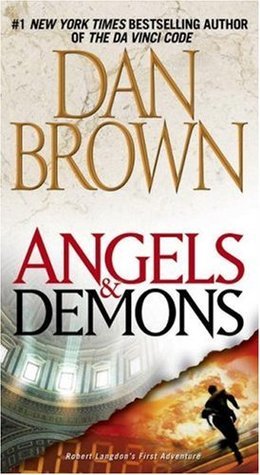 Angels & Demons
Angels & Demons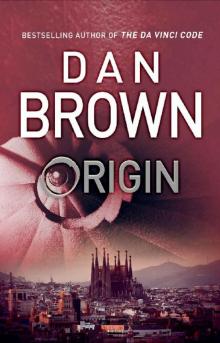 Origin
Origin The Da Vinci Code
The Da Vinci Code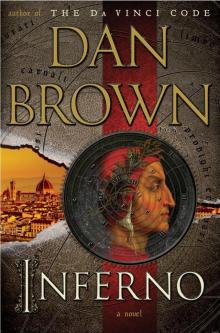 Inferno
Inferno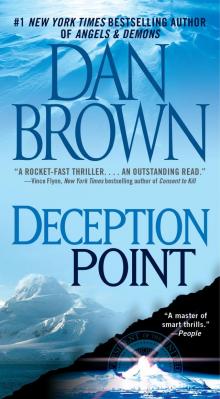 Deception Point
Deception Point Digital Fortress
Digital Fortress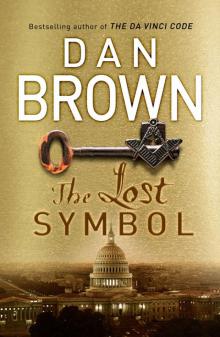 The Lost Symbol
The Lost Symbol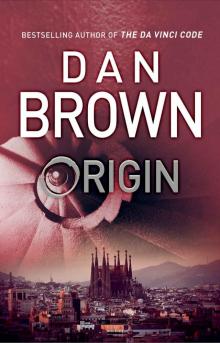 Origin: (Robert Langdon Book 5)
Origin: (Robert Langdon Book 5)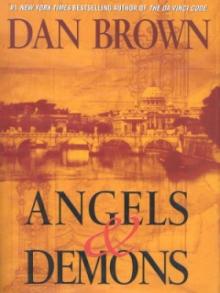 Angles & Demons
Angles & Demons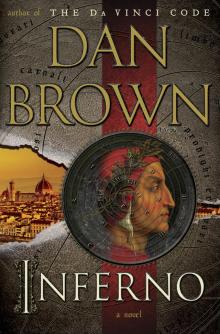 Inferno: A Novel
Inferno: A Novel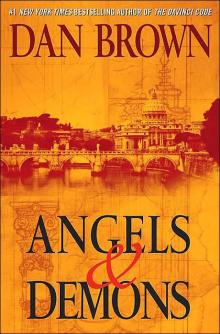 Angels & Demons rl-1
Angels & Demons rl-1 The Great Expectations School
The Great Expectations School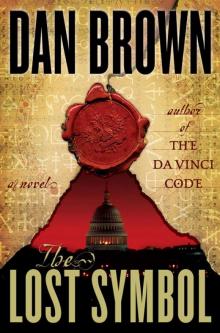 The Lost Symbol rl-3
The Lost Symbol rl-3 Angels and Demons
Angels and Demons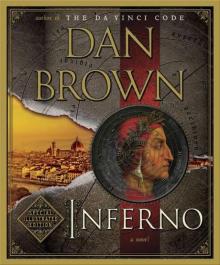 Inferno: Special Illustrated Edition: Featuring Robert Langdon
Inferno: Special Illustrated Edition: Featuring Robert Langdon